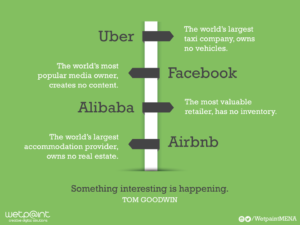 By Dr. Steven Shepard, on behalf of GreatAmerica – One of the phrases I hear repeated over and over until it becomes a meaningless buzz is, ‘If it ain’t broke, don’t fix it.’ I understand the sentiment that was behind this phrase when it was first uttered: it came from the telephone industry, and it was an admonition not to make things worse by fiddling with something that’s working well enough. But here’s the danger in accepting that statement at face value: Things often are broken, and we can’t see it. We’ve developed blind spots to them, and have accepted them as a good-enough status quo. And in today’s world, that doesn’t serve us.
By Dr. Steven Shepard, on behalf of GreatAmerica – One of the phrases I hear repeated over and over until it becomes a meaningless buzz is, ‘If it ain’t broke, don’t fix it.’ I understand the sentiment that was behind this phrase when it was first uttered: it came from the telephone industry, and it was an admonition not to make things worse by fiddling with something that’s working well enough. But here’s the danger in accepting that statement at face value: Things often are broken, and we can’t see it. We’ve developed blind spots to them, and have accepted them as a good-enough status quo. And in today’s world, that doesn’t serve us.
This is as true for a sales organization as it is for a leadership team or a design group made up of engineers. It’s a matter of adaptation: failing to adapt to a rapidly changing environment can mean the difference between success and irrelevance (the only thing, by the way, that’s a worse end state than failure). Tom Peters captured the essence of this concern beautifully: “To meet the demands of the fast-changing competitive scene, we must simply learn to love change as much as we hated it in the past.”
Here’s the fundamental question: what’s at risk if your sales team doesn’t adapt to evolving technology and changing customer environments? The answer, quite simply, is—everything. Organizations must change and must provide an incentive to change to their employees AND their customers. Why? Because that incentive is the essence of leadership. Let me explain.


